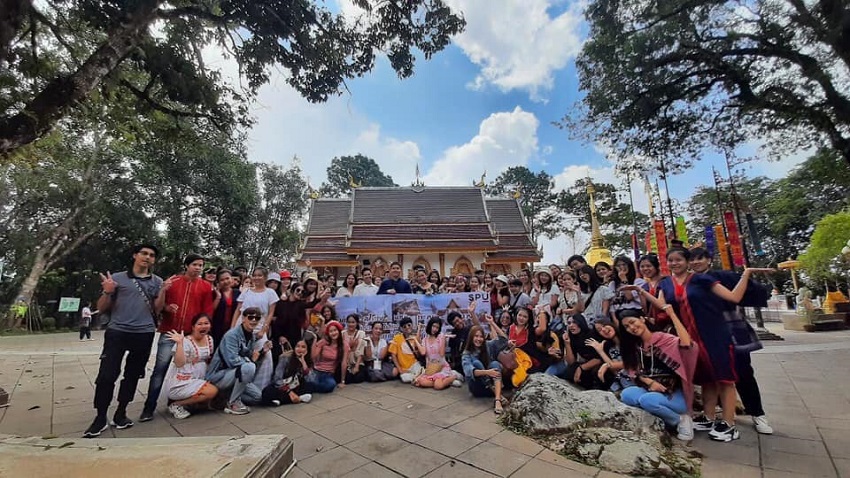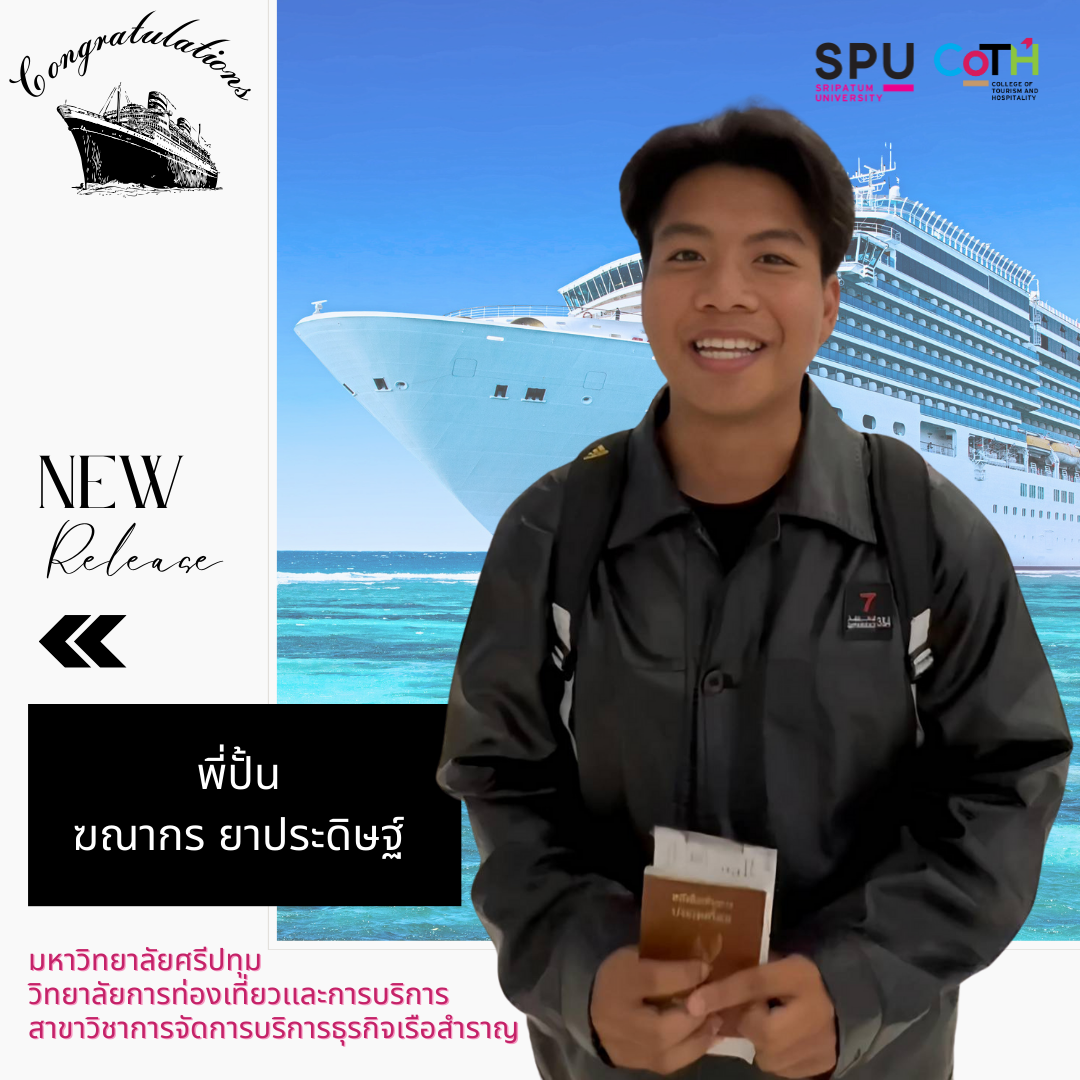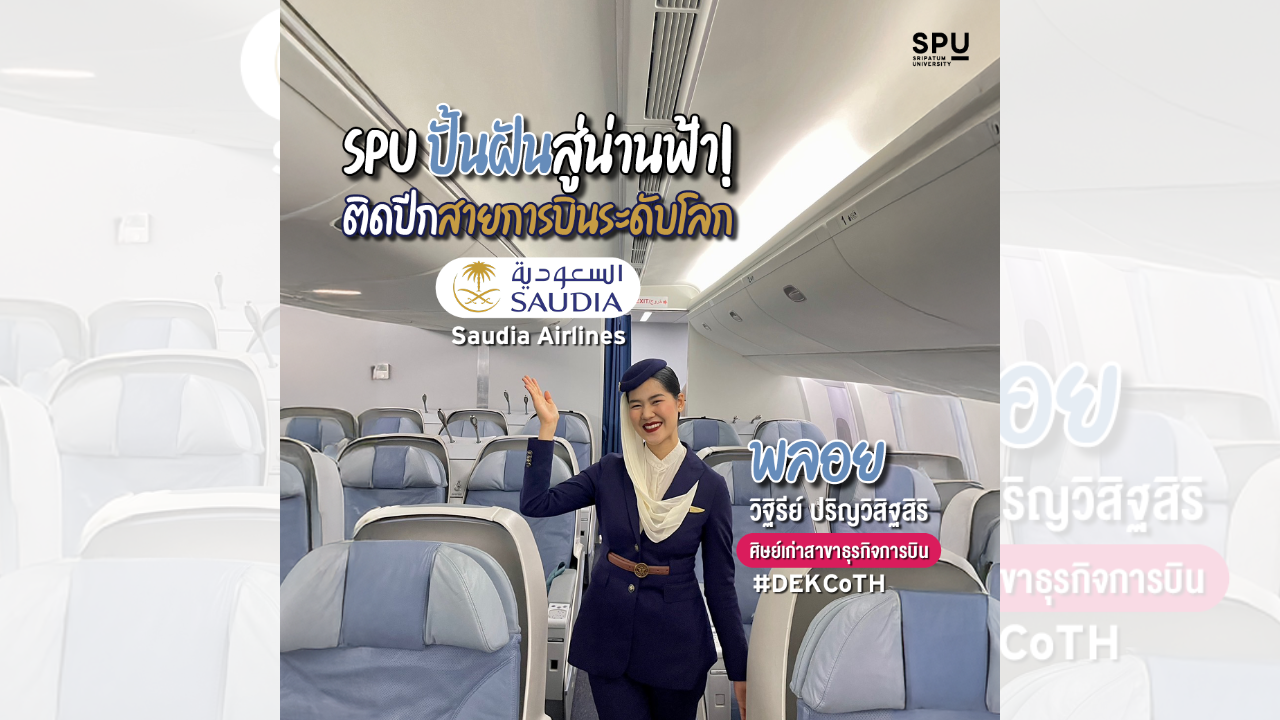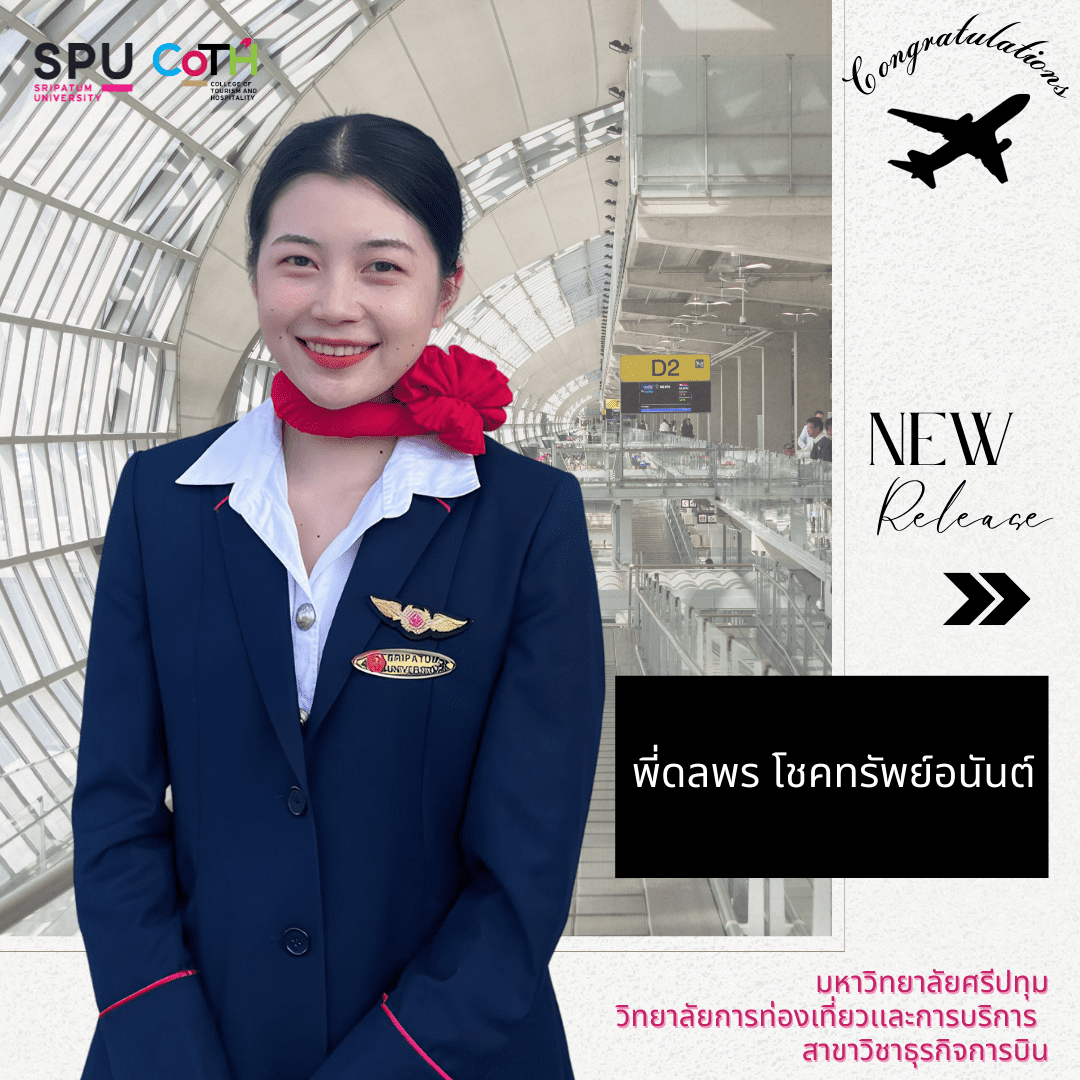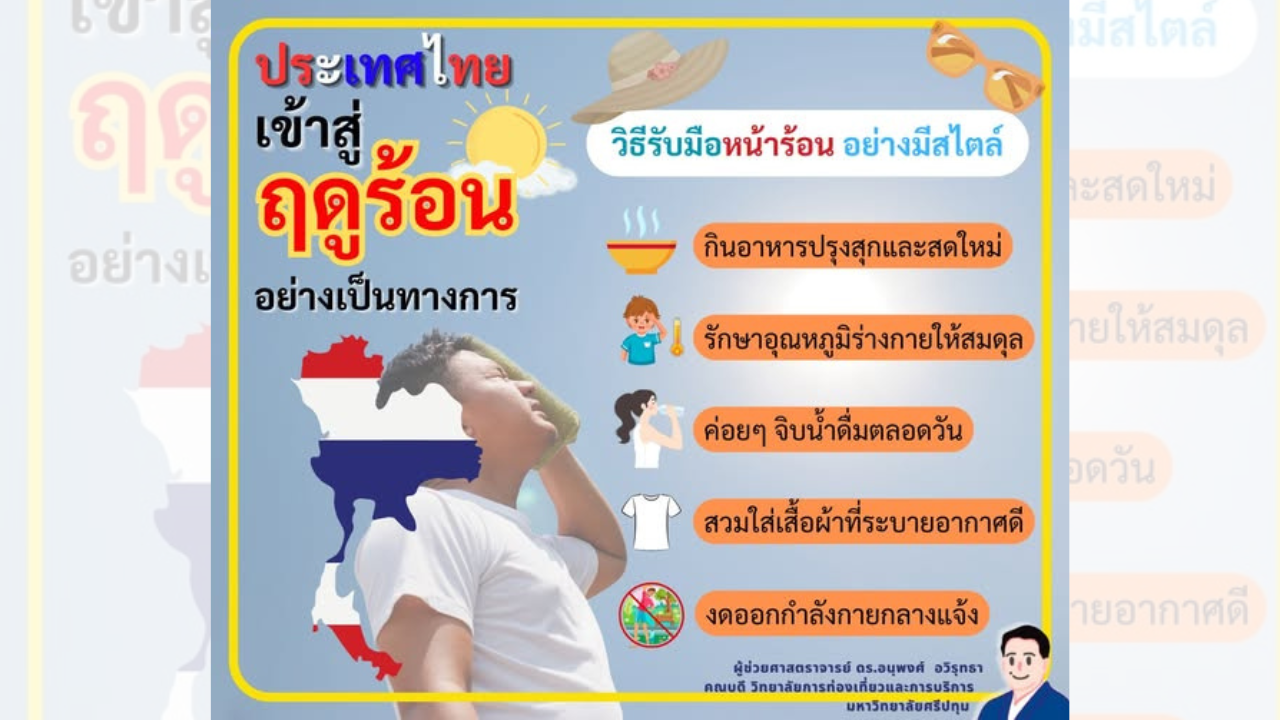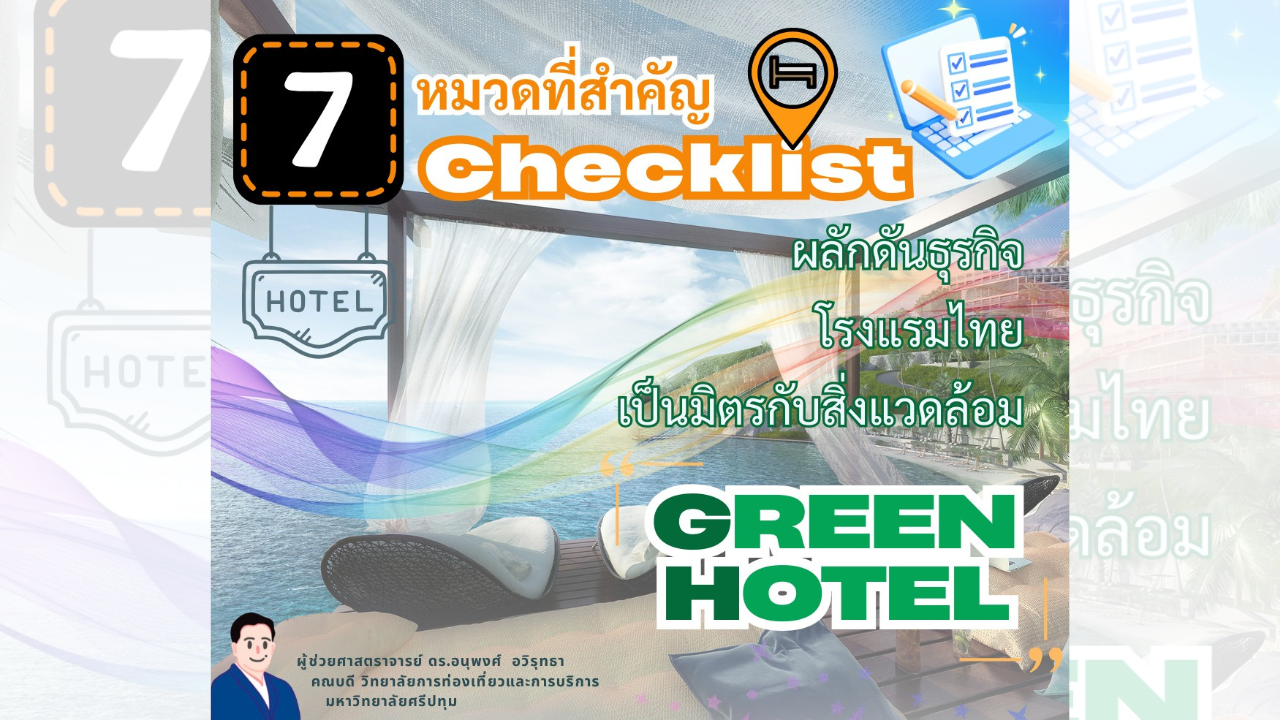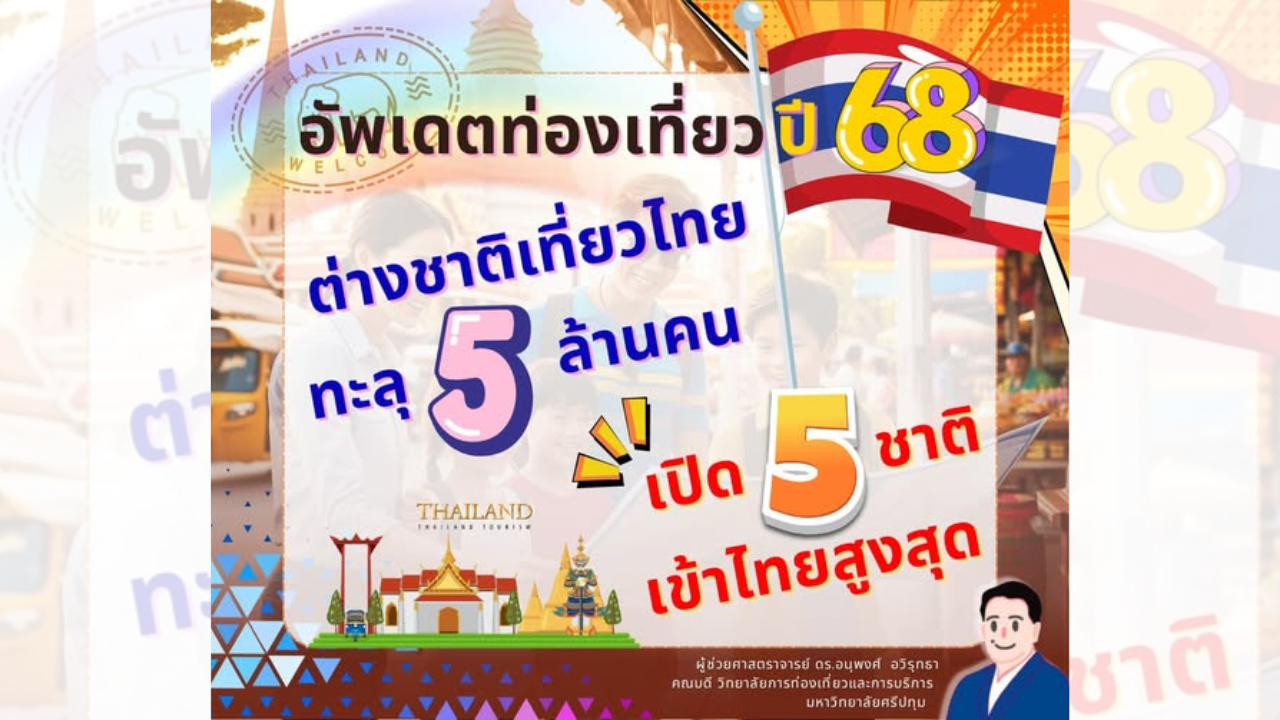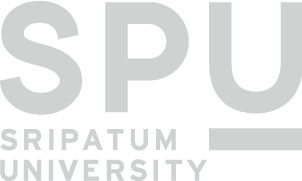Department of Tourism and MICE Management, Sripathum University
Let’s see where the 59 seniors went during the 3 days of learning.
Start the first day of gaining experience in Sukhothai Province.
Check-in point 2: Wat Chang Lom
Check-in point 3: Wat Chedi Chet Thaeo
It is one of the important ancient sites of Si Satchanalai Historical Park, located in Si Satchanalai District, Sukhothai Province. The temple is located in front of Wat Chang Lom, facing southeast. This temple is unique compared to other temples in Si Satchanalai because it has many different types of chedis, such as the main chedi in the shape of a lotus bud behind the chapel, which is a true Sukhothai art style, 26 secondary chedis, and seven rows of chedis that have been influenced by art from many places, such as Sri Lanka and Bagan. Behind the main chedi are secondary chedis that have a distinctive square base and round tops. Inside the chedi, there is a niche hall, which is where a standing stucco Buddha image is enshrined, with paintings depicting past Buddhas.
Day 2 in Nan Province – Phayao
Check-in point 1: Phra Borommathat Chae Haeng
The sacred relic of Nan people, Wat Phra Borommathat Chae Haeng is located in Ban Nong Tao, Tambon Muang Tuet, Phu Phiang District, Nan Province, about 2 km from the city center on the Nan-Mae Charim route. It is estimated to be around 600 years old. King Praya Kanmong ordered its construction in 1891 to enshrine the relics of the Lord Buddha brought from Sukhothai. The pagoda is 55.5 meters high and sits on a square base, 22.5 meters wide on each side. It is entirely covered with brass. It is one of the most beautiful ancient sites in Lanna. Phra Borommathat Chae Haeng is an important religious site of Nan Province and is over 600 years old. According to the chronicles of Nan Province, King Praya Kanmong ordered its construction to enshrine the relics brought from Sukhothai between 1891-1901. The architecture of the church of Wat Phra That Chae Haeng is important and shows the architectural style and art of Nan craftsmen.
Check-in point 2: Wat Phumin
Located at Ban Phumin, Mueang Nan District, Nan Province, near the Nan National Museum, it was originally called “Wat Phrommin”. This temple is different from other temples because the chapel and the viharn are built as a single building. The wooden doors in all four directions are beautifully carved by Lanna craftsmen. In addition, the walls also show the life and culture of the past eras, according to the chronicles of Nan. Wat Phumin was built around 2139 by Phra Chao Chetbut Phrommin, the ruler of Nan, after he had ruled Nan for 6 years. It is recorded in the Mueang Nuea Scriptures that the original name was “Wat Phrommin”, which was named after Chao Chetbut Phrommin, the temple builder. However, the temple’s name was later changed to Wat Phumin.
Check-in point number 3: Hong Chao Fong Kham
In addition to collecting routes, we also did activities to promote community tourism. We had the opportunity to visit Hong Chao Fong Kham, located on Suman Thewarat Road, Soi 2, Mueang Nan District, Nan Province. It is a large teak house in Lanna style, an old house that is almost 200 years old. Hong Chao Fong Kham is the home of Chao Fong Kham, a descendant of Chao Anantaworaritdet, the 62nd ruler of the city. The word “Hong” is a local Lanna word, meaning a residence or residence of the Lanna Tai lord. Hong Chao Fong Kham is a teak house raised on stilts in an ancient Lanna style.
Check-in point number 4: Kwan Phayao
Located in Mueang Phayao District, Phayao Province, it is the largest freshwater lake in the North and the fourth largest in Thailand (after Bueng Boraphet, Nong Han, and Bueng Lahan). The word “Kwan” in the local language means “lake”. It came about when the Fisheries Department built a water gate to provide water for the people in the dry season and to prevent the strong water from flooding the orchards and farms downstream in the rainy season. It is located in the center of Phayao City with a mountain range as a backdrop. It is formed by water flowing from 18 streams. The average water volume is 29.40 million cubic meters per year. There are 45 species of freshwater fish.
Day 3 in Chiang Rai Province
Check-in point 1: Wat Phra Kaew
Located on Trairat Road in the heart of Chiang Rai, this temple was where the Emerald Buddha or Phra Phuttha Maha Mani Rattana Patimakorn, which is currently enshrined at Wat Sri Rattana Satsadaram (Wat Phra Kaew) in Bangkok, was discovered. According to history, in 1897, during the reign of King Sam Fang Kaen, a lightning struck an abandoned pagoda and a gold-lacquered Buddha image was found inside. Later, the lacquer peeled off, and it was discovered that the Buddha image was green jade, which is the Emerald Buddha. Wat Phra Kaew Chiang Rai currently enshrines the Jade Buddha, which was newly built on the occasion of Her Majesty Queen Srinagarindra’s 90th birthday.
Check-in point 2: Rong Suea Ten Temple
Located in Rong Suea Ten Community, Rim Kok Subdistrict, Mueang District, Chiang Rai Province, the important highlight is the new Ubosot built in applied Thai art, which has beautiful and unique art from the craftsmanship of Mr. Phutta Kabkaew or Salan Nok, a local artist from Chiang Rai who used to be a student of Ajarn Chalermchai Khositphiphat and used to work at Wat Rong Khun. It is an applied art that is unique in its use of shades of blue and sky blue contrasting with gold. Salan Nok learned various flowing patterns from his teacher, but his art uses white tones and uses glass, while Salan Nok adapts it to use blue and sky blue instead to make it unique. In particular, the Naga staircase sculpture, which uses the same shades, is graceful and has patterns that are clearly different from other sculptures.
Check-in point number 3: Phra That Doi Tung
It is considered one of the oldest historical sites in the North. According to the historical legend, Phra Maha Kassapa Thera, the head of the monks, invited the relics of the clavicle (left root) of the Lord Buddha to present to King Uchutarat, the ruler of the city of Nagaphan Yonok Chai Buri, King Rama III of the Singhanawati Dynasty, who was the head along with the chief ministers, ministers, and subjects of his kingdom. He brought the relics to be enshrined at Doi Din Daeng (currently Doi Tung) in 1454 B.E.
Be amazed by the final performance of the trip with Lanna art, “Muan Jai Chao Nuea”, which the 59 seniors have intentionally created in a magnificent way, making the department head and faculty members very impressed.
Learn with real people, real experiences. Learn at Sripathum University.
#49 years SPU#College of Tourism and Hospitality #Sripathum University






































